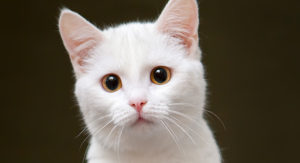The area now called County Cavan was officially created as such in 1579. For centuries prior to the colonial conquest of Ireland, these lands once made up part of the eastern half of the ancient kingdom of Breifne (Bréifne, pronounced: bray-fna), a confederation of great families that reached the height of its power around the 12th century.
The Kingdom extended as far west as Drumcliffe (Droim Chliabh, meaning ‘ridge of the baskets’), Sligo, and as far east as Kells (derived from Ceanannas, possibly from Cean Lios, meaning ‘head fort’), in County Meath.
In the Irish annals titled Chronicon Scotorum, at year 943 it references Dub Lemna ingen Teighearnáin mac Seallachan as a queen of Ireland, daughter of the king of Breifne and wife to the king of Temair (Tara), in Meath. Her brother was Ruarc mac Tighernáin who flourished c. 893 and is the ancestor from whom the O’Rourkes of Bréifne took their family name.
Their rivals the O’Reilly’s took their name from an ancestor who fought and died during the Battle of Clontarf, 1014, named Raghallach (thought to derive from ragh, meaning ‘race’, and ceallach, ‘sociable’). They were descendants of Brian Boru from the races of the Connachta tribes. Another branch of descendants took the name Mág Tighearnán, or McTiernan, and had their base at Tullyhunco, from Teallach Dunchadha, meaning the ‘Territory’ or ‘Household of Dunchadh’s (descendants)’.
The McTiernan’s owed military duties to the Mág Samhradháin, or McGovern, clan who were prominent chiefs at Tullyhaw, Teallach Eathach, meaning the ‘Territory’ or ‘Household of Eochaidh’, an ancestor of the McGoverns, who lived c. 650 AD.
Clan Mac Brádaigh, or McBrady, were also prominent and produced the Irish poet and scribe Fiachra Mac Brádaigh who flourished through the mid 18th C. and taught pupils through the Irish language at secretive hedge schools during this oppressive penal era.
Tiernan ‘the great’ O’Rourke (Tighearnán Mór Ua Ruairc) was the 19th ruler of Breifne of the O’Rourke line, who flourished through the years 1124-1172. His rivalry with Dermot Mac Murrow (Diarmait Mac Murchada), king of Leinster would become the prelude to the Anglo-Norman invasions (1169-1172).
During the feud between the two kings, Mac Murrow would kidnap the wife of O’Rourke, Derbogilla, leading to O’Rourke’s petitioning of the then high-king Rory O’Connor (Ruaidrí Ua Conchobair) to rally men to his cause. After expelling Mac Murrow from Ireland and seizing his land, the dispossessed king prostrated himself in a plea for assistance to King Henry II.
While unwilling to send his own men to fight in this foreign cause, Henry did sanction his nobles and knights to assist if they were so willing. And willing they were. A band of Normans landed in Ireland led by Striguil, otherwise known as Strongbow, with the hope of attaining great lands and booty. Strongbow rallied to Mac Murrow’s cause on the promise of his daughter Aoife’s hand in marriage, thus promising Strongbow his kingdom by right of inheritance through marriage under the Anglo-Norman law.
A stunning oil painting by Daniel Maclise titled The Marriage of Aoife and Strongbow (1854) depicts the aftermath of the invasion as piles of Irish bodies, wailing widows, and a bard with his broken stringed harp line the forgrown as Aoife with head hanging in submissive shame stands before her forced match framed by the rubble of Christchurch Cathedral. Her marriage became the symbol of the subjugation of the Gael. Rory O’Connor would be the last serving high-king of the Gaelic Irish people.
 Clan O’Rourke |  Clan O’Reilly |
Later, in 1256, a bitter rivalry erupted for the kingship of Breifne between the traditional ruling families of the east and west; the Ó’Rahilly (O’Reillys) and the Ó’Ruairc (O’Rourkes). The feud led to the Battle of Moyslaught near the town of Ballinamore (Béal an Átha Móir, meaning ‘mouth of the big ford’), the result of which left the confederation of Breifne split into two kingdoms each with their respective ruling clans; the O’Reillys in the east, occupying the area known today as Leitrim, and the O’Rourkes in the west, in the area known as Cavan. Eventually the O’Reilly’s established themselves in east Breifne building a castle in Cavan town and amassed great wealth and power over the following centuries.
Breifne remained a divided kingdom until the Ulster plantation campaigns (1610-1630) when the lands were officially split by the Tudor administration into the counties of Cavan and Leitrim, with Cavan becoming part of the province of Ulster and Leitrim part of the province of Connacht.



